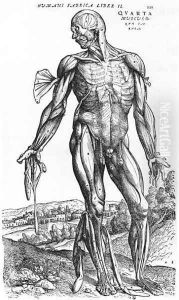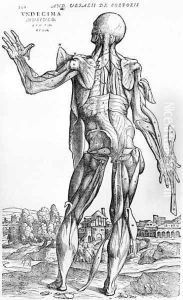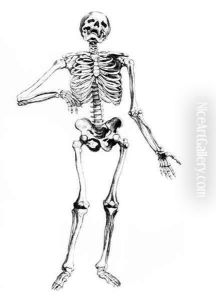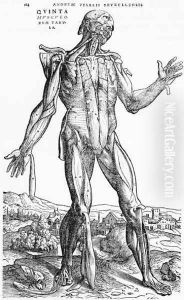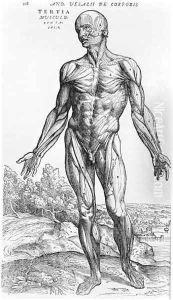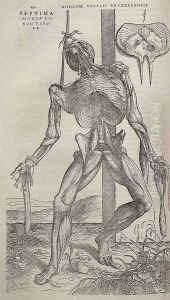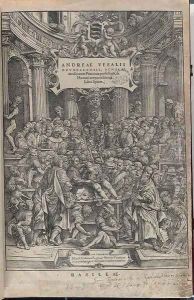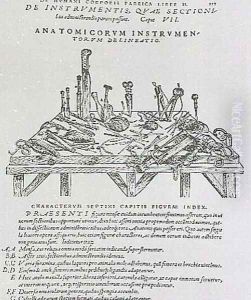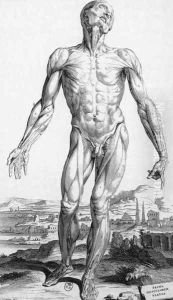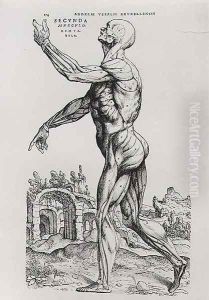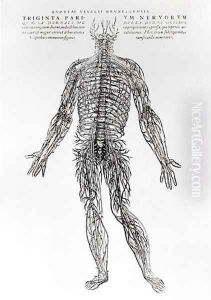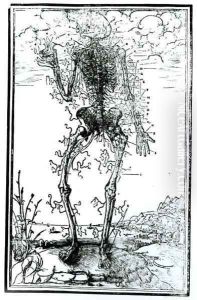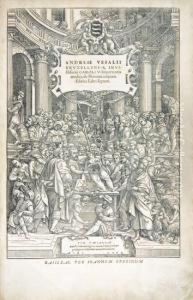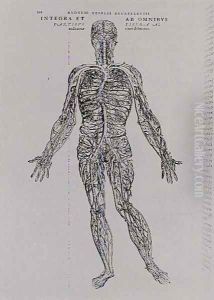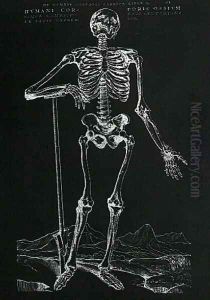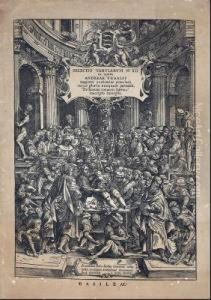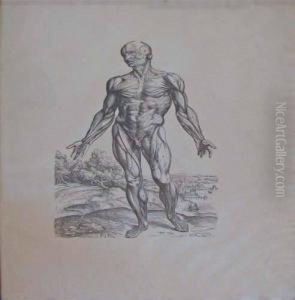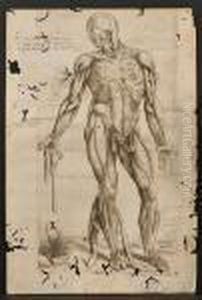Andreas Vesalius Paintings
Andreas Vesalius, born on December 31, 1514, in Brussels, which was then part of the Holy Roman Empire, is often referred to as the founder of modern human anatomy. He came from a family of physicians and pharmacists and was taught at an early age about the human body. Vesalius attended the University of Leuven (Louvain) in 1530 before moving on to study medicine at the University of Paris, where he learned the prevailing Galenic anatomy.
However, Vesalius was not content with the established teachings, which were based primarily on animal dissection and theories formulated by the ancient Greek physician Galen. Believing that studying the human body directly was essential, he conducted dissections on human cadavers, a practice that was quite uncommon and even controversial at the time. His hands-on approach and meticulous observations began to reveal differences between Galen's animal-based anatomical descriptions and the human anatomy.
In 1537, Vesalius moved to Italy, where he continued his studies at the University of Padua, one of the leading centers of medical learning and research. He was appointed as a professor of surgery and anatomy shortly after his graduation, and he became renowned for his public dissections that emphasized practical experience alongside theoretical teaching.
Vesalius' major work, 'De humani corporis fabrica' (On the Fabric of the Human Body), published in 1543, is considered one of the most influential books on human anatomy. In it, Vesalius corrected many of Galen's errors, providing detailed and accurate descriptions of the human body for the first time. The Fabrica was also groundbreaking in its use of illustrations, which were both detailed and artistically impressive, showing the body in various layers. These images were crucial in conveying complex anatomical information and contributed significantly to the book's success.
Despite the initial controversy and opposition from some in the medical community who were staunch Galenists, Vesalius' empirical methodologies and focus on direct observation established new standards for anatomical study. His later years were spent in service to the Habsburg royal family, and he eventually faced various challenges, including professional rivalries and personal accusations.
Vesalius died under mysterious circumstances in 1564 after a pilgrimage to the Holy Land, possibly on the island of Zakynthos (Zante), in what is now Greece. Although his revolutionary work was met with some resistance during his lifetime, his legacy lived on, influencing generations of anatomists and medical professionals, and earning him the title of the father of modern anatomy.
